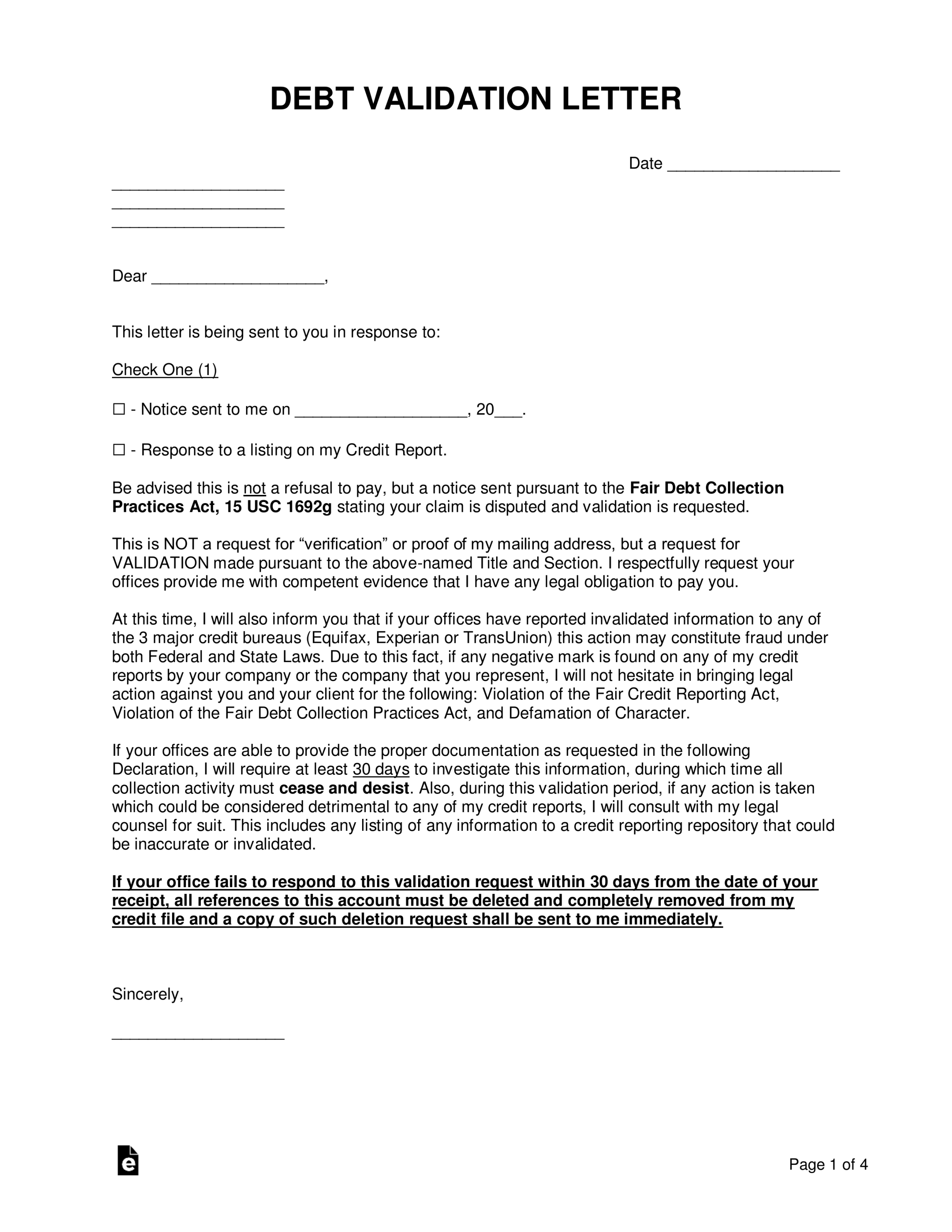Purpose of a Debt Validation Letter
A debt validation letter is a formal document sent to a debt collector or creditor requesting verification of a debt. Under the Fair Debt Collection Practices Act (FDCPA), consumers have the right to dispute a debt within 30 days of receiving a debt collection notice. By sending a debt validation letter, you exercise your right to challenge the accuracy and validity of the debt.

Key Components of a Debt Validation Letter
While the specific content may vary depending on your individual circumstances, a well-crafted debt validation letter should include the following essential elements:
1. Your Contact Information
Your Full Name: Clearly state your full name at the top of the letter.
2. Creditor or Debt Collector Information
Creditor or Debt Collector Name: Identify the specific creditor or debt collector you are addressing.
3. Debt Details
Debt Account Number: If known, include the debt account number to reference the specific debt.
4. Validation Request
Clear and Concise Statement: Directly request that the creditor or debt collector validate the debt.
5. Communication Preferences
Preferred Method of Communication: Indicate your preferred method of communication, such as email or phone.
6. Consequences of Non-Validation
Sample Debt Validation Letter
[Your Name]
[Your Mailing Address]
[City, State, ZIP Code]
[Your Phone Number]
[Your Email Address]
[Date]
[Creditor or Debt Collector Name]
[Creditor or Debt Collector Address]
Dear [Creditor or Debt Collector],
I am writing to dispute a debt listed on my credit Report. The debt is identified as [debt account number] and was originally issued by [original creditor].
I am requesting that you validate this debt in accordance with the Fair Debt Collection Practices Act (FDCPA). To validate the debt, please provide me with the following information:
A copy of the original contract or agreement related to the debt.
I prefer to receive your response by [preferred method of communication] within [timeframe for response].
If you fail to validate this debt within the specified timeframe, I may take further legal action.
Thank you for your prompt attention to this matter.
Sincerely,
[Your Name]
Additional Considerations
Certified Mail: Consider sending your debt validation letter via certified mail with a return receipt requested to ensure delivery and obtain proof of mailing.
Conclusion
By sending a well-crafted debt validation letter, you can protect your rights as a consumer and potentially challenge the validity of a disputed debt. Understanding the key components and following the guidelines outlined in this guide will help you effectively exercise your rights under the Fair Debt Collection Practices Act.